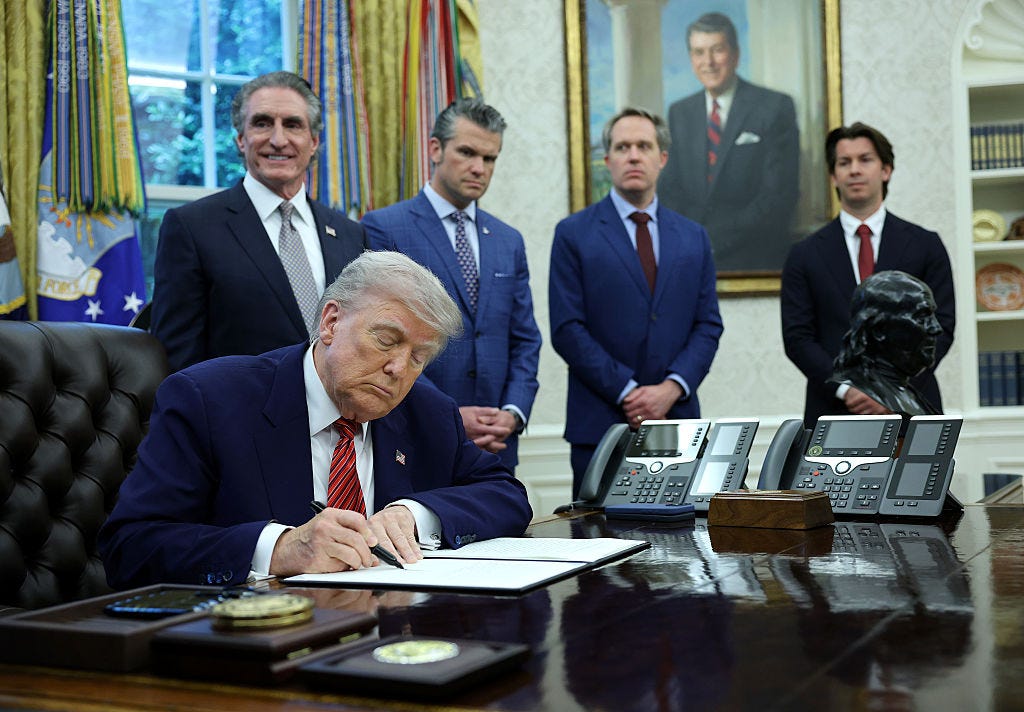Test Case
American wildcatters pivot to nuclear.
“In theory, there is no difference between theory and practice. In practice, there is.”—Yogi Berra
John George Trump was one of the 20th century’s great physicists. For 34 years, Trump led the High Voltage Research Laboratory at the Massachusetts Institute of Technology (MIT), where his contributions to science left lasting legacies in medicine, nuclear physics, industry, and the military.
Through World War II, he was a critical contributor to the MIT Radiation Laboratory—the largest civilian scientific organization of the war—with a focus on advanced radar technology. Trump’s work on high-voltage generators was instrumental to the development of rotational radiation therapy, which eventually revolutionized cancer treatment. In 1983, President Ronald Reagan awarded him the National Medal of Science in Engineering Sciences for his many accomplishments.
The fact that the paternal uncle of the 47th president of the United States was a pioneer in the development of nuclear technology undoubtedly helps explain some of the latter’s consistent support for the industry. During Donald Trump’s first term, he worked hard to jump-start the revival of civilian nuclear energy, albeit with mixed success. After four years of contemplating his political comeback, Trump has utterly revolutionized America’s energy agenda.
Among the flurry of executive actions launched in his first months in office, President Trump laid waste to the domestic solar and wind industries, worked with Congress to gut the Inflation Reduction Act, and paved the way for a true US nuclear renaissance by signing a series of momentous executive orders. Here’s how the excellent Substack, Coffee & Covid, described the whirlwind in late May:
“Together, Trump’s 2025 energy pivot—anchored by the nuclear executive orders and EPA’s rollback of greenhouse gas rules—is profoundly historic. Not just in scale, but in doctrinal ambition. It blows past any previous US energy shift. It is the single biggest US energy strategic realignment since, at least, the 1973 Oil Crisis, and the most aggressive pro-nuclear policy in world history.
No US administration since the Manhattan Project has ever tried to reorganize the nation’s entire power ecosystem—supply chain, education, regulation, financing—all at once. Welcome to 2025. You’re witnessing the birth of a post-climate, post-renewables energy doctrine, where not carbon but grid dominance becomes the organizing principle of American power policy.”
Several key architects of President Trump’s nuclear agenda are veterans of the shale revolution. Prior to his appointment as US Energy Secretary, Chris Wright, himself an MIT graduate, was a serial energy entrepreneur, founding several companies that would achieve enormous commercial success in the shale basins of America. Wright also invested in and served on the board of Oklo Inc., a startup developing advanced nuclear power plants and small modular reactors. US Secretary of the Interior Doug Burgum previously served as governor of North Dakota, home to the Bakken Formation, where he earned a reputation as one of the country’s most energy-friendly state leaders.
Among the numerous startups now racing to develop advanced nuclear technology in the US are several backed by those who made their fortunes in shale development. Perhaps foremost among them is Texas-based Natura Resources, a privately held company founded by energy entrepreneur Doug Robison. Back in 2005, Robison and two others formed ExL Petroleum to focus on unconventional resource plays in the Permian Basin. In 2014, ExL partnered with the private equity firm Quantum Energy Partners, securing a $500 million capital infusion as part of the transaction. The public record suggests both sides are likely pleased with the deal.
In late May, we were afforded the opportunity to interview Robison as part of a private panel discussion, an offer we gladly accepted. Our interest—beyond Natura itself—was to gauge firsthand whether the current hype around nuclear energy will be translated into new reactors actually splitting atoms. What we learned left us surprisingly optimistic.



